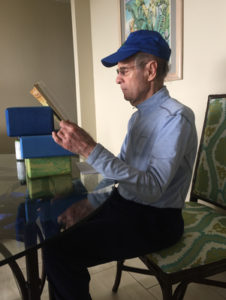 I just finished filming a class for my weekly Patreon service. I was about to title it, “Open Your Hips and Flow into Vashistasana” but then I caught myself. I chose the term “open” out of a longstanding habit that I picked up during my travels in modern postural yoga. ‘Open’ is often used as a synonym for ‘flexible.’ Although our ability to move our hip joints is crucial to so many movements in life: walking, sitting, dancing, I don’t think that everyone needs to develop more flexibility in their hips. In fact, I think the emphasis on ‘being open’ has caused physical, emotional and psychological damage, so I am exploring new terminology that more clearly reflects this awareness.
I just finished filming a class for my weekly Patreon service. I was about to title it, “Open Your Hips and Flow into Vashistasana” but then I caught myself. I chose the term “open” out of a longstanding habit that I picked up during my travels in modern postural yoga. ‘Open’ is often used as a synonym for ‘flexible.’ Although our ability to move our hip joints is crucial to so many movements in life: walking, sitting, dancing, I don’t think that everyone needs to develop more flexibility in their hips. In fact, I think the emphasis on ‘being open’ has caused physical, emotional and psychological damage, so I am exploring new terminology that more clearly reflects this awareness.
The Yoga Sutras, one of the most cited yoga texts in the western world, begins with the definition of yoga as “the calming of the fluctuations of the mind.” Over the past century, the development of a flexible body erroneously became conflated with the attainment of this kind of inner peace and happiness.
I theorize that the invention of photography greatly contributed to the dangerous assumption that greater hip mobility leads to a better life. Yoga was first introduced to mass populations in Europe and the U.S. around the time that photography became popular. Pictures of Indian men doing incredible feats of contortionism were circulated in pamphlets, books and posters. Along with their incredible physical acts, these men also were portrayed as being enlightened or having reached nirvana—a higher and more desirable state of consciousness.
In my first years as a yoga student, I was surrounded by messages advocating postures that required extreme levels of hip mobility. Images of these postures were abundant on studio walls and in recommended books. I remember one teacher pounding her hands on the floor while emphatically proclaiming, “Everyone has to be able to do Padmasana (lotus pose) for us to continue to learn.” Another teacher reported that he would tie himself up at night in order to increase the external rotation of his hip. Students were continually praised for going deeper into a pose. Students with less mobility often expressed feelings of inadequacy when they could not easily achieve the idealized degree of flexibility.
While I do not have any evidence-based research to present, I know of many yoga practitioners who have sustained severe hip injuries. When I studied at the Iyengar Institute in India, I met a number of senior students who were pushing through the pain in their hips. It is only recently that some teachers have become willing to discuss this publicly. Jill Miller, a long time teacher who had two hip replacements in her 40s, openly acknowledges that the early degeneration in her hips was due, at least partially, to the focus on flexibility in her yoga practice.
A while ago I wrote a blog called, “Why Flexibility?” Since that time, I’ve noticed that the emphasis on flexibility is changing in some yoga communities. More yoga practitioners have acknowledged that flexibility is not the key to a fulfilling yoga practice or a way to cultivate ultimate happiness. Terminology is also changing. I find myself using the terms ‘mobility’ and ‘agility’ in place of ‘openness’ and ‘flexibility.’ Now seems to be a good time to clarify what we do want to achieve for our hips. Instead of focusing on how open or deep one can be in a pose, I advocate for hips that have a balance of mobility, strength and stability. These qualities support the ability to move with grace and ease and provide for a more harmonious bodily experience.
I consider that being able to sit on the floor with one’s leg out straight in front of one’s torso to be an adequate level of mobility for daily life. Comfort with this kind of floor sitting translates into the ability to hinge from one’s hips while standing without bending the knees. This makes daily movements, such as bending to pick something up, accessible.
There are many exercises to develop hips that have a good balance of mobility, strength and stability. Modern Postural Yoga is one path, but some movement restrictions require practices outside the realm of yoga. You can find some of them on my website. Simply stated, the best way to take care of your hips is to move and groove in different positions!
Here are a few suggestions:
Eat a sandwich while sitting on the hood of a car with your legs straight forward and then celebrate your tasty meal with a different seated position.

Practice Bigasana – Take your legs wide apart every so often throughout the day.
Do some standing hip circles.
Pretend to be a sea creature – Lie down on the floor and move your arms and legs around as if you were swimming in warm water.
If some of these movements are not accessible, first practice restorative exercises, as they can help make these other movements more attainable. Never move into pain but do challenge yourself to experience positions that may feel awkward or unusual.
In my quest to refine the terminology I use to teach movement-based practices, I came up with a new title for the video. Check out, Enliven Your Hips and Flow into Vashistasana.
You can watch it on my Patreon Channel. If you like practicing this way, you can also sign up here to receive a class a week.


